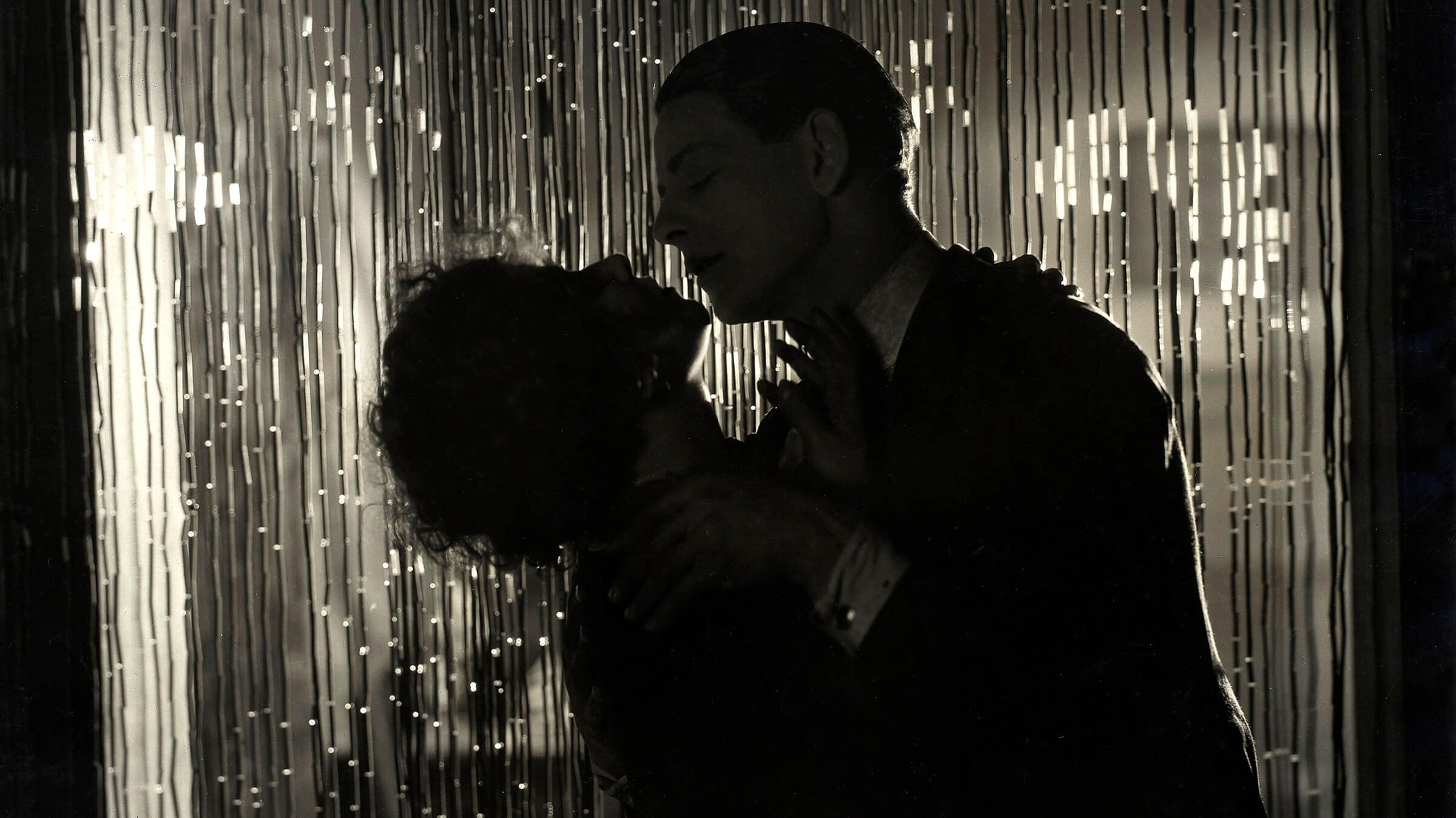After the critical and commercial success of The Lodger (1926), Gainsborough Pictures were keen to reunite director Alfred Hitchcock and star Ivor Novello. A convenient vehicle suggested itself in the stage play Down Hill, written by Novello with Constance Collier, under the combined alias David L’Estrange. Downhill is one of the darkest of Hitchcock’s early films and follows the fall from grace of promising public school head boy Roddy Berwick. It features a succession of predatory and manipulative female characters who torment Novello’s hapless young hero: the shop girl who falsely accuses Roddy of fathering her child; the selfish and mercenary actress who marries him for his inheritance, then abandons him when the money runs out; the venal nightclub ‘Madame’ who exploits his penury by hiring him out to dance with her lonely, aging clients.
It’s not hard to imagine that the play reflects the experiences of Novello himself, a gay matinée idol oppressed by unwanted female attention. One might even include him in the lineage of Hitchcock blondes—imperiled and vulnerable and prey to the camera’s fetishistic gaze. We are used to seeing Hitchcock’s heroines in their underwear, but here we see Novello shirtless in an early scene. Later, in a gloriously Hitchcockian scene, we see him in a series of personas as the camera pulls back to reveal him first as a tuxedo-clad gentleman, then a waiter, then a petty thief, before we realize he is actually an extra in a West End musical, bobbing up and down with the rest of the cast in as humiliating a position as any chorus girl might have found herself. This is clearly the sensation that Hitchcock is trying to deliver: we are significantly more shocked at the maltreatment of a boy by scheming women than we are to a girl being similarly maltreated by men.
Hitchcock was characteristically disparaging about the film in later interviews, but Downhill is a deceptively rich and often elegant work. Although he later found the descending escalator a clumsy symbol for Roddy’s downward trajectory, it works well in the context of the late silent movie of the 1920s and is echoed later in the film with his descent in a lift—the camera focusing on the ‘down’ button. Roddy hits rock bottom in a Marseilles dance hall being rented out to desperate middle-aged matrons for five francs a dance. At the end of the night, in which he appears at last to have found a sympathetic ear, the curtains are suddenly ripped open in a kind of reversal of the gloom of German expressionism, the ‘searching relentless sunlight’ exposing the sordid inhabitants. It is impressively unpleasant. Most striking is the nightmare scene in which the delirious Roddy, on a boat bound for home, sees hallucinations of his stentorian father as a policeman and his past tormentors gloating over the money they have made from him as if in some Dantean circle of hell. Inspired by his memory of stage lighting, Hitchcock had the sequence tinted a sickly green to express the character’s nausea and mental turmoil. Many years later, he would employ a similar device in Vertigo (1958).
The Restoration
The original negative of Downhill does not survive so the restoration was based on two vintage nitrate prints—one from the BFI’s own collections and one on loan from the EYE Film Institute in the Netherlands. There was some compensation in working from original prints as they had their original tinting and toning so that we have been able to restore the color that Hitchcock used so expressively in his silent films.
Reproduction of the tones and tints found in three films, The Pleasure Garden, Downhill and The Lodger, has also constituted a major aspect of the restoration project. In the absence of scripts or other primary documentation, it appears that these are the only Hitchcock films that were released domestically in tinted and toned prints. Considerable pains were taken to determine the color schemes of British release prints, and these have been followed in the restored print. As in the other Hitchcock restorations, a great deal of grading and digital clean up as well as the remaking of the intertitles, has had impressive results. New negatives of the restored film have been made for long-term preservation.
A BFI/Park Circus Films Release • 105 minutes • 35mm
Restoration by the BFI National Archive in association with ITV Studios Global Entertainment
and Park Circus Films
Principal restoration funding provided by Simon W. Hessel
Additional funding provided by Deluxe 142 and The Headley Trust
Presented at The Hitchcock 9 event in 2013 with live music by Stephen Horne

